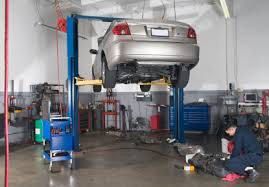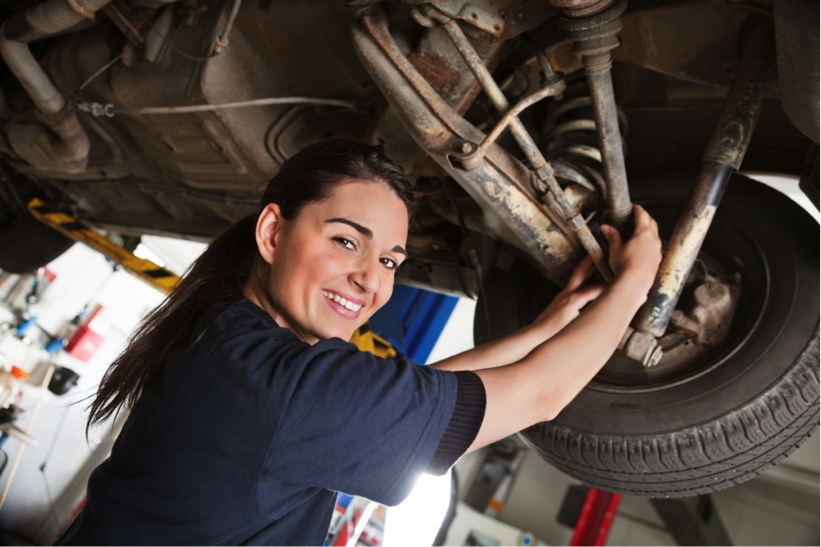How do I start a small auto repair shop?
Define the Scope of Your Operation
Determine how many customers you plan to help per day and to what extent you will help them.
- Types of services. You can either provide basic services such as oil and tire changes or comprehensive services such as collision repair, engine maintenance and electrical services.
- New or current shop. Determine if you will start from scratch or buy a current shop. Buying new means you have to buy everything including tools and equipment, whereas buying a current shop might mean that you already have everything you need to run your business.
- Franchise or independent. Starting as a franchise such as Jiffy Lube or Midas requires franchising fees of about $200,000 to $400,000 and an ongoing royalty fee of three percent. Therefore, the financial barrier to entry is high. However, if you can afford it, you get the advantages of marketing and the recognition of a national brand name.
Find a Strategic Location
Situate your auto repair business close to main roads and highways. It needs to be in a centralized location to your customer base. Towing services are normally charged by the mile, and if you are not near your customers, they may go somewhere closer. The garage needs a wide access to allow customers to drive their cars in, a high ceiling of at least 15 feet to accommodate car lifts and a minimum of a 6-inch thick floor to mount your equipment to.
Look for a location with good natural lighting, as it helps the mechanics when checking the cars. The space should have an office area for your administrative needs and a waiting area for customers who plan on waiting for their cars to be repaired.

Get Certified
You’re not required to have ASE certification to work on cars, but without it, you might find it substantially more difficult or expensive to obtain liability insurance and find financing for your new business. ASE certification tells potential customers that you know what you’re doing. It gives car owners confidence, and can be a very important marketing tool. Before you qualify to take the certification test, you’ll need a minimum of two years of work and educational experience combined, with at least one year obtained on the job.
Know the Startup Costs
Before you spend a dime opening your shop, you need to know the total projected cost to get up and running. If you don’t, you might run out of funds before gaining your first customer. While it is impossible to project certain costs ahead of time, the most common and expensive line items are easily predicted. The total cost is right around $47,000, in equipment, insurance, and rent. Buying a building and making alterations can significantly change that number, depending on construction costs. Choosing to buy an existing auto shop can also affect the bottom line.

Get Legal Advice
A lot more goes into opening a business than just finding a location and serving customers. You’ll need to obtain a business license, look into the regulations surrounding liability insurance requirements, open accounts to handle payroll and tax reporting, file your articles of incorporation, and other pre-sale steps. A lawyer is invaluable during this process, helping you ensure every “i” is dotted and “t” crossed. You don’t have to retain a lawyer, but it can save you from a lot of mistakes along the way.
Set up Interviews
If you have a very small shop, you might do all of the work yourself, but you will probably still need at least one employee to handle telephone calls and customers. If you have a couple of lifts and want to maximize your capacity, you’ll need additional mechanics to help service vehicles. The hiring process should start at least a month before your grand opening. You’ll want enough time to check references, find the best candidates, and negotiate compensation packages.

Get the Word Out
Marketing is another big part of opening the doors. Be sure to schedule a Grand Opening, so locals can stop in and see the shop. You might want to advertise special discount pricing for that first day or week, just to bring customers through the doors. You’ll also want to have a standard service list of pricing and a shop rate finalized, so you can estimate your revenue potential.
Advertising Your Auto Shop
- Hang up fliers around town.
- Advertise on your local television station.
- Offer discounts on common repairs and oil changes
- Use social media sites
Hire the Right Employees
Finding exceptional employees can be a difficult and time-consuming task. However, it’s important to remember that there are auto mechanic colleges across the country ready to provide garages with newly trained employees. You’ll want to strike a good balance between experienced employees and recent grads, so your garage has an effective ratio of experts and novices. Most garages engage in the apprentice system. An auto mechanic apprenticeship is a paid position, which can last from one to four years. It is assumed that after the apprentice period, the employee will continue to work for the repair garage. By hiring apprentices, a new auto body shop can establish a long-term, fruitful working relationship with a skilled mechanic – carefully trained by its own experts.
Market Your Business
Good advertising will get customers to your shop, but fulfillment of promises made in your ads will keep those same customers coming back, year after year. Online advertisements can go a long way, especially if you have your own website on which to showcase promotions. As for your advertising content, a popular route is to offer customers guarantees, such as a guaranteed free repair if your brakes wear out within a certain time limit. Guaranteeing your work gives customers a reason to trust that you will do a good job. You may also choose to create an ethics statement which can be featured prominently in your workplace, or online. This may outline your duty to satisfy customers, conform to established laws, and to keep customers fully informed of costs throughout the repair process.